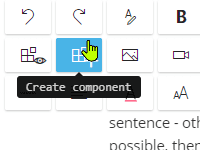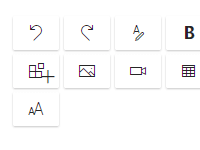
5 tips for better work instructions

The internet is littered with amusing examples of poorly written work instructions and videos of hilarious, if not hair-raising, workplace fails. Watching these ones we cannot help but wonder if the two are related – absent or poorly written work instructions resulted in costly fails. Here’s how to make sure your work instructions are on point, with our 5 tips for better work instructions
Before we begin our 5 tips for better work instructions, let’s consider two cases of when work instructions probably could have been clearer. Maybe you’ve seen other amusing examples. If so, we’d love it if you shared one in the comments below.
Red hot danger
The guys in this video appear surprisingly casual given a red-hot steel rope is snaking wildly in their factory. Good work instructions may have avoided this. Better work instructions would have improved their safety.
You MUST jump

There’s a lot going on in this instruction. It conjures up images of Bruce Willis in Diehard. Which is unlikely to help people stay calm. If there really was an emergency, what might happen? One hates to think.
What are work instructions?
Work instructions go by different names: work guides, standard operating procedures (SOPs), job aids or user manuals. Regardless, their purpose is clearly to explain how a job is done. They give step by step instructions on how to complete a task.
What they are not
Do not confuse work instructions with processes or process maps. The latter two illustrate the overall flow of work within a company or department – the who does what and when – while the former explains the how.
Examples of features for better work instructions

Reusable work instruction components
Turn selected content into components to be reused across processes, saving time and effort.

Integrated work instructions and SOPs
Build step-by-step instructions with text, media and files to explain how and why work is done.
5 tips for better work instructions
#1 Actually have them
This might sound obvious. But you’d be surprised how many companies are winging it, so to speak, without work instructions. It’s not enough to put a new employee through a training day or week and then just leave it at that. People can take in only so much information in a hurry. So they need something to refer to when they need it. Yes, it takes time to prepare these, but doing so ensures you preserve the best, safest, most efficient way of performing a task. It’s more than worth the investment.
#2 Find the expert
The good news is you don’t need to write these by yourself. Find the person who knows how to do the task the best and ask them to write down the steps to perform it. This avoids guesswork and misconceptions and provides the skeleton for the work instruction. You can then add to it with more detail, images or video.
#3 Make them visual
We live in visual communication culture. Few of us want to wade through lengthy volumes on anything, let alone a work instruction about our least favourite job. Be nice to your colleagues and make it visual. Take photos of different steps to a task or film someone doing it and build these into the work instruction. Visual elements ensure your work instructions are followed.
#4 Make them accessible
It’s all very well and good having a work instruction, but not so helpful if your colleagues don’t have access to them when and where they need them. It’s best if your work instructions can be accessed online and via mobile devices. Even better if the work instruction platform allows for interaction, comments, and gives an overview of where in your company’s process map the task is located. This is exactly what Gluu offers.
#5 Keep them simple
If you find yourself writing long sentences or using baffling technical mumbo-jumbo in your work instruction, it’s a sign you need to step back. Remember what Albert Einstein said: “If you can’t explain it simply, you don’t understand it well enough”. Every employee should be able to understand your work instructions. Avoid multi-syllable words, complex sentences with clauses, jargon, acronyms, too many technical terms (without explaining them) and unnecessary blather. Use the active voice to help your reader. This is the subject, verb, noun sentence structure. For example, the man (subject) sipped (verb) his beer (noun), not, his beer the man sipped.
👉 Recommendation: It highlights the importance of clarity and accessibility while emphasizing the value of visual elements. The five tips offered here serve as a valuable guide for anyone looking to improve their work instructions, making them more useful and user-friendly for colleagues and employees.
Learn more about work instructions
That was all of our 5 tips for better work instructions. But, if you want to learn more about how to write effective work instructions, check out our guide to writing work instructions. It offers an array of tips and pointers to help you write work instructions your colleagues use, respect and benefit from.
Conclusions
Creating clear and effective work instructions is crucial for ensuring safety, efficiency, and productivity in any workplace. This article has provided valuable insights and practical tips, emphasizing the importance of visual elements, simplicity, and accessibility. By following these guidelines, organizations can enhance their work instructions, benefiting both employees and the overall operation.
Frequently Asked Questions
Work instructions, also known as work guides, standard operating procedures (SOPs), or job aids, are documents that explain how a specific job or task is to be performed. They provide step-by-step instructions, helping individuals understand and carry out tasks effectively and consistently. Work instructions are important because they ensure uniformity, safety, and efficiency in work processes.
To make work instructions more accessible, consider using an online platform that allows employees to access instructions from anywhere, including mobile devices. Additionally, choose a platform that offers interactive features, such as comments and feedback, to facilitate communication and understanding among employees.
If you find it challenging to create effective work instructions, start by seeking input from subject matter experts who are experienced in the task. Collaborate with them to outline the steps, and use visual elements like photos or videos to enhance clarity. Remember to keep the language simple, avoiding technical jargon or complex sentences, and focus on the active voice for clear communication.
This post was originally published on August 23, 2017, and revised on February 04, 2021.



